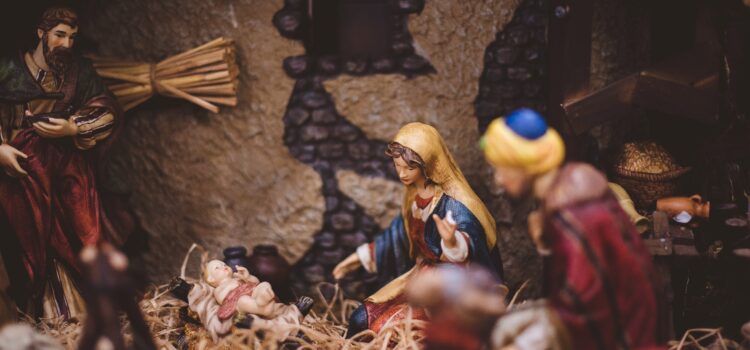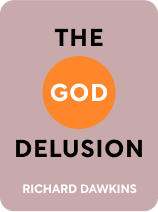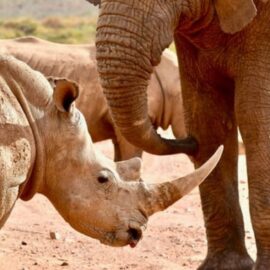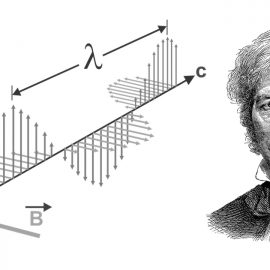

This article is an excerpt from the Shortform book guide to "The God Delusion" by Richard Dawkins. Shortform has the world's best summaries and analyses of books you should be reading.
Like this article? Sign up for a free trial here .
Where did religion come from? Is religion a natural part of human evolution, or something else?
While we can’t specifically identify the answer to the question “where did religion come from” there are some clues. It also poses bigger questions about why we have religion, and whether it’s a necessary part of human life.
Keep reading to find out the answer to the question “where did religion come from?”
Where Did Religion Come From?
If religion directly confers few concrete evolutionary advantages, why have humans always been so vulnerable to its false claims? The picture becomes clearer if we consider religion as a by-product of other instincts and cognitive traits that do confer a significant advantage in natural selection. If we look at it this way, religion represents a massive misfiring of an instinct that’s usually useful. So where did religion come from? Consider these options.
Child Obedience to Authority
Religion could have emerged as a misfiring of the generally advantageous fixed-action behavior pattern of child obedience to adult authority figures. With regard to natural selection, children obeying community elders makes perfect sense. In early human societies, children who adhered to adult commands such as, “Don’t go swimming in that river with the fast-moving rapids,” or “Stay out of that section of the woods where bears are known to prowl” would naturally have had a far greater chance of survival than those that didn’t. These obedient children would have a greater chance of growing up to have children of their own, to whom they would pass on their obedient genes.
But this unquestioning obedience would also make children vulnerable to the authoritative claims of religion. If you are hardwired to blindly adhere to all adult rules and regulations, there is every reason to accept the claims of religious leaders who tell you which gods to pray to and which rituals to perform.
These children grow up and pass on their propensity for religion to the next generation. Of course, the specific content of the religion will vary from place to place and evolve over time, depending upon the natural environment and the broader social structure of the community. But the basic mechanism of transmission would remain the same. When asking “where did religion come from?” it’s important to consider this idea.
Teleology and Intentionality
Religion may also represent a misfiring or by-product of the natural tendency toward teleology and intentionality. So does this answer the question “where did religion come from?”
Teleology is the belief that there is a purpose for everything we observe in the natural world. Child psychologists observe that children appear to have a natural tendency toward teleology, believing that trees exist to give animals shelter from the rain or that the ocean exists so fish can have a place to swim.
Teleology gives us a shortcut to understanding how things work. It is easier to comprehend complex phenomena like the workings of the human lung if we conceive of them as purpose-driven (in the case of the lung, its purpose is to pump oxygen throughout the body). Closely related to teleology is intentionality, the belief that the things we observe in the world are the products of conscious agents with a specific intention. This likewise would have been a useful trait for survival (it would be advantageous, after all, to assume that a hungry lion intends to eat you).
But it is a short leap from teleology and intentionality to religious belief, and the idea that God controls everything in the physical and spiritual world.
The Moth to the Flame
The misfiring concept is easier to understand if we use a metaphor from the insect world. It is a commonly observed phenomenon that moths will sometimes fly directly into an open flame, burning themselves to death in the process. If we’re looking at it from a strictly evolutionary perspective, this makes no sense. Why would an animal concerned with survival and producing offspring do something so self-destructive and irrational?
The reason is that moths usually rely on sources of natural light like the stars and the moon to guide their way back home after a night of foraging and feeding. Moths survive by flying into the path of light. This behavior with respect to light is a fixed-action pattern: Upon presentation of a certain stimulus (light), the moth instinctively engages in a behavior (flying toward it), because throughout almost their entire evolutionary history, this behavior is what maximized their chances of survival and producing offspring.
But with the relatively recent arrival of humans and their control of fire, the fixed-action pattern became scrambled. The stimulus appeared to be the same, but the corresponding behavior came at a deadly price. Thus, the act of suicide-by-flame is in fact an unintended by-product of an evolutionary instinct that is nearly always advantageous to the moth.
(Shortform note: To learn more about fixed-action patterns and how they influence human behavior as well as that of animals, read our summary of Robert Cialdini’s Influence: The Psychology of Persuasion.)
As you continue ask “where did religion come from?” you can consider these ideas and more.

———End of Preview———
Like what you just read? Read the rest of the world's best book summary and analysis of Richard Dawkins's "The God Delusion" at Shortform .
Here's what you'll find in our full The God Delusion summary :
- Why Dawkins thinks religion has exerted a harmful influence on human society
- How Dawkins concludes that the existence of God is unlikely
- The 3 arguments that challenge the existence of God






